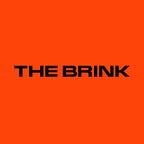The hottest UI trends for 2021
Just as technology develops, the expectations of users rise accordingly. Designers have to bring their A-game year after year. Some UI trends are here to stay, but most of them come and go. What could have been popular last year, can be totally out of fashion this year. It is a major challenge for designers to keep their creations fresh and relevant. Let us take a closer look at what will be hot in 2021.
Minimalism
Just as it sounds, this is all about simplicity. It has been around for a while and isn’t planning on going anywhere. It has even gained popularity lately. The art of minimalism revolves around adding less instead of more. Think of simple lines, minimal graphic elements, a limited number of colors. The functionality of graphics is key. Users are kept from an overload of visuals. A minimalistic interface loads faster, uses fewer resources and is easy on the eye. Minimalism is still a popular style and rightfully so. It can be aesthetically pleasing and in a world where we are bombarded with content, a minimalistic design stands out through its modest nature.
Soft gradient
In times where minimalism is favoured over hypercomplex designs that make your eyes blink and your head tilt back, soft gradient is the way to go. This trend emerged from the flat-design. The gradients give the image volume and depth without using extreme colours. Just use a couple of soft colours to create beautiful blurry backgrounds, elements or buttons. It is so easy on the eye and directs the user on a natural way to the points of interest.
Glassmorphism
Last year this new style emerged and caused some noise. It is a combination of two approaches, skeuomorphism and flat design. The funny thing is that these are pretty much opposites of each other but go together very well. The blurred background gives you the feeling you are looking through glass, hence the name glassmorphism. This new design trend is a breath of fresh air, merging two techniques together to create a playful effect. We expect that 2021 will see a lot of it and who knows, maybe this morphs into something new?
3D visuals
Yes, they have been around for a while now. But 3D is here to stay! Whether you are talking about websites or applications, 3D is taking over the scene. It offers creative freedom through depth, textures, lighting, shadows and mesmerizes the user. It takes design to the next level. It becomes easier to create with the help of new tools, making it accessible for everybody. Fantasies are turned into jaw-dropping visuals. The complexity of design can reach unbelievable levels, which surprises users time after time. 3D elements can be implemented anywhere. Even real-life products can be digitalized to bring a whole new dynamic to their nature.
With 3D versions of actual objects, the possibilities are endless and a visual spectacle can be created to captivate the user. This draws in new public and makes your brand stand out. Optical satisfaction is a great way to stand out. Not only do we eat with our eyes, we buy with them as well. We are reaching the level of artificially created hyperrealism which makes it close to impossible to make a clear distinction between three-dimensional design and the real deal. 3D is the real deal and it will only evolve due to improved technology and skill. The designers’ interest in 3D will only grow. Entire 3D scenes in interfaces are created where the user is taken into a brand-new world. Expensive objects or appealing surroundings can be created in 3D, which does not only look good, it also saves money and increases possibilities. Users are bound to spend more time on a site, creating a stronger bond, improving conversion rates.
Virtual Reality
In the last couple of years, Virtual Reality really took flight. It leaves a lasting impression on users. There are several industries than can hugely benefit from the possibilities, especially during the lockdown. Think about education for example where interaction can be enhanced. Events and conventions can be brought to life with the use of VR. During these restricted times, the demand for this type of events is growing. We expect a lot of design opportunities for virtual spaces.
Augmented Reality
UI restricted to screens is outdated. Technology opens a lot of doors and AR is taking big steps forward. The focus is more and more interactions that feel like they are taking place in a real-world environment. Big companies like Google and Apple have already developed their AR platforms that blend in with the physical world. AR UI can be approached in different ways:
· Object-related, where real objects have tethered interactions
· Screen space fixed, the user has to position the camera in a specific manner
· Real-world related, this uses the surrounding physical world
Headsets are improving but there are also special glasses being developed. This is exciting news since it will boost the AR experience. We advise designers to start learning the new tools to create AR interfaces and 3D elements. We believe that this will only evolve and take more digital space in the years to come.
Conclusion
When we look at the above-mentioned trends, we see that there is a certain softness taking over the UI design realm. From soft gradients to glassmorphism, there is little room for extreme and aggressive colours and designs. We are looking a lot at screens these days and it seems that we prefer designs easy on the eyes. Another trend that is here to stay is 3D. Its possibilities are endless and it makes designs dynamic and lively. The skills of designers and the technology combined make you wonder whether there still a difference between the real deal and 3D is. 3D is the real deal!
